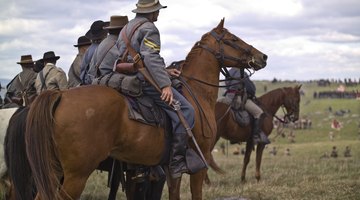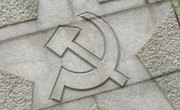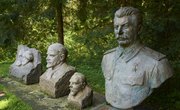Both the Union and Confederate armies relied on intelligence information during the Civil War. Although neither side felt the need to create centralized intelligence organizations, both sides used spying techniques to gain an advantage in the fighting. Several wartime generals organized their own intelligence-gathering operations to help inform them on the battlefield by giving them information about enemy troops and battlefield strategies.
Bureau of Military Information
The Union Army did not have a formal centralized intelligence organization, but it had espionage services that operated under the direction of specific generals. Major General John C. Frémont organized a group of spies to gain intelligence for his forces in the Union Army. These spies wore Confederate uniforms and entered behind enemy lines, distinguishing their appearance from real Confederate soldiers by tying their white scarves in a special way. They would sometimes carry back written intelligence reports wrapped in tinfoil inside their cheek.
U.S. Secret Service
Union General George B. McClellan used his own intelligence service to inform his battlefield decisions as he led his Army of the Potomac. He hired Chicago detective Allan Pinkerton to lead his intelligence service during the Civil War – a service he called the “U.S. Secret Service.” It began as the first Union intelligence operation in mid-1861 when President Abraham Lincoln called McClellan to serve as his general. The U.S. Secret Service repeatedly overestimated Confederate Troop numbers during the 1862 Peninsula Campaign, causing General McClellan to call for many reinforcements.
The Secret Line
The Confederate Signal Corps set up a secret intelligence service called the Secret Service Bureau. This Confederate bureau managed what it called the “Secret Line,” a team of Confederate intelligence operators who had the job of passing secret messages from Richmond to Confederate officials in the Washington-Baltimore region. These spies sometimes corresponded with Confederate contacts in Canada and Europe.
Union officials and Confederate officials both looked through mail correspondence in an effort to find information about enemy forces. This forced both sides to work hard to hide their communications in the mail. For example, to make sure large amounts of mail did not arrive suspiciously at the same address, Confederate spies established multiple addresses to form a network of mail recipients to help in the war effort. The individual addresses were made up mostly of unpaid volunteers.
Related Articles
References
Writer Bio
Brian Gabriel has been a writer and blogger since 2009, contributing to various online publications. He earned his Bachelor of Arts in history from Whitworth University.











